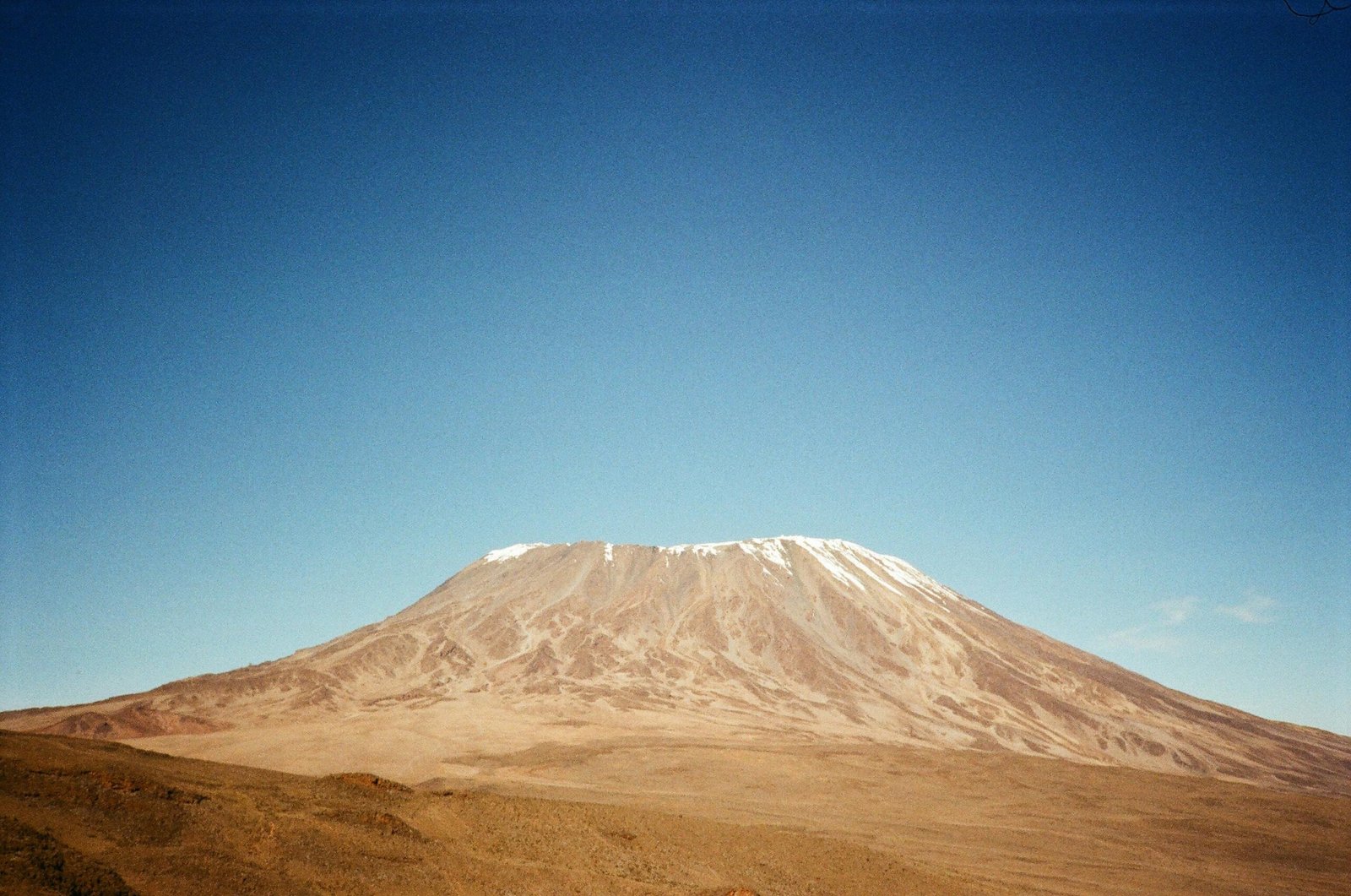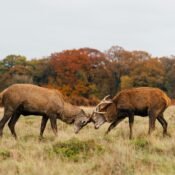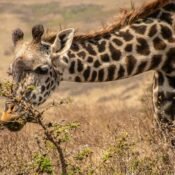
The Lemosho Route: Why It’s One of the Best for Kilimanjaro Climbers
The climbers have the unmatched adventure of their lives as they climb the highest mountain in Africa, Mount Kilimanjaro offers the climbers the adventure through the humid rainforests and the mountain top ice and snow. The ways to the top are not few and an incorrect decision can make or break the entire experience. One of the seven official routes is Lemosho Route and can be said to be among the most scenic, even-handed and satisfying routes to the Uhuru peak. Lemosho has been the best place to be with its amazing views, low traffic and high acclimatization hence when one needs adventure and success at the same time.
One Scene-Setting Introduction: The Westward Introduction.
Lemosho Route begins at the western section of the mountain of Kilimanjaro and it begins at the Londorossi Gate. This is considered as one of the most beautiful trails in the mountain. Climbers start their adventure in a rain forest which is clear, there are trees and foliage that are thick and can hear the tropical birds and monkeys swinging over the trees.
Unlike Machame or Marangu trail which is busy, the first section of Lemosho is remote and may be enjoyed in the wilderness. It is an uphill walk through a picturesque montane forest cover and then out to the Shira Plateau which is a high altitude region offering a view of the two twin peaks of Kilimanjaro, Kibo and Shira. This section is calm, and thus the hikers get the chance to spend some time in the mountain before they can get to the more populated tracks later.
Excellent Acclimatization and high success rate.
One of the biggest challenges faced by climbers in the Kilimanjaro mountain is altitude sickness. Lemosho Route is among the routes that have the most promising acclimatization schedules, and can be completed between 7 and 8 days. The gradual uphill will provide the body more time to acclimatize to the thin air and chances of attaining the peak are very high on the safe mode.
Trekkers also have the philosophy of climb high, sleep low meaning that during the day they are climbing higher and at night they sleep lower. The body receives immense opportunities to get acclimatized gradually, such camps as Shira, Barranco, and Karanga offer.
As a result of such a steady development, the success rate in the summit on the Lemosho Route is among the highest and more likely is that the vast majority of the people involved in it will achieve it, in particular, when they have the 8-day itinerary. This makes it good to the people who are new as well as the ones who are experienced climbers who would like to have the best chances of being at the Uhuru Peak.
Lush Diversity of Landscape and varying Eco Systems.
The actual unique feature of Lemosho Route is the spectacular combination of the ecosystems along the path. During the ascending, the climbers get to explore practically all the ecological areas in Africa be it in the tropical rainforests, the alpine deserts and the frozen glaciers.
Rainforest Zone (1,800 2,800 m): Rainforest trail: Rainforest trail begins with dense green forests, which are home to blue monkeys, colobus monkeys and other plants.
Moorland Zone (2,800 3,800 m): You will see giant heathers, lobelias and senecios on your way up.
Alpine Desert (3,8005,000 m): The moon has grotesque and unreal landscapes, which have been formed because of fierce winds and rocks.
Beyond 5,000 m (Arctic Summit Zone): The final dramatic feature is the glaciers and snowfields at the top which provide a final panoramic view of the sunrise over Africa.
This difference makes sure that there is no similarity between two days on Lemosho Route because the trekkers are not bored and kept busy throughout the hike with the visual effect.
Fewer people and Smoother Pathways.
Compared to such popularity routes as Machame or Marangu, Lemosho is less crowded and more peaceful, and especially in the initial part of the path. The fact that the origin (west) has not so many groups, who choose such a way and have the opportunity to treasure the feeling of isolation and exclusivity, makes trekkers choose this path.
Only in the Shira Plateau, there is a combination of Lemosho Route with Machame Route, which adds more numbers of climbers. By the time, the trekkers are in good shape and they can have fellow trekkers to accompany them to the same destination. The relaxation of the first half is accompanied by the expectation of the best by each other, which is in the form of equal social and wilderness adventure.
Indoors Outdoors: Ultimate Camping Adventure.
Lemosho Route is primarily a camping path that enables the climb to be more adventurous. The tour operators operating in an organization that is well integrated provide comfortable tents, nutritious food and personnel to assist in the tour, and they attend to the logistics and the security.
There is a difference in the airing of each of the campsites along the pathway:
Mti Mkubwa (Big Tree Camp): this one is located deep in the rainforest.
Shira Camps: Highland view.
Barranco Camp: This camp is referred to as the camp with the most spectacular sunsets under the Barranco Wall that soars.
Barafu Camp: This was the final resting point and before midnight, they were going to push to the summit.
The climbing experiences of the contemporary also offer you the lack of need to exchange comfort with adventure since you are not obliged to slumber and stay in full force to the challenging adventure ahead of you.
The Flaming Granite Ferocious Barranco Wall and Breathtaking Views.
The Barranco Wall is a technical free and steep uphill which most of the trekkers are eager to experience during the Lemosho Route as one of the best experiences. The part may be referred to as the Breakfast Wall as during this time of the day, the climbers are trying to accomplish part of the mountain that was not accomplished the day before and that which they are trying to accomplish is the portion that you have taken after taking a breakfast. The part provides scrambling and use of feet in some occasions but provides rewards in terms of amazing views within the valleys and glaciers.
As you get to the top you are greeted with breathtaking scenery that overlooks the splendor of the Kilimanjaro, grand cliffs, vast plateaus and a preview of the top.
A Pacing of both Skill Level.
Even though Kilimanjaro is not a technical climb, physical fitness and psychological strength are significant determinants. Lemosho Route is safe halfway between challenges and ease of access. The climb is not too difficult or too easy because it is not so exhausting but at the same time exciting to a person of average fitness.
In order to conserve energy and help in acclimatization, guides walk a slow slow (Swahili pole pole) pace. It is a steady beat that is surrounded by well calculated phases of the camps that empower even the novice climbers to make it to the top with the correct preparations.
An extraordinary Experience in a Meeting.
The walking to Uhuru Peak will be a lifetime experience to the climbers who walk along Lemosho Route. The final ascent will begin at midnights at the Barafu Camp in which trekkers will arrive at the peak when the sun will be rising. Every passage and every agony is compensated when the rays of light first touch the glaciers, and the plains of Africa are seen so far below.
The descent usually takes the Mweka Route and is faster in the sense that it consists of going through moist forests and the journey may be a full circle around the mountain.
Conclusion:
the Lemosho Route is what it is, all that in Kilimanjaro, a diversification of landscape, a fine acclimatization curve, the lack of traffic, an insuperable combination of difficulty and comfort. It is also perfect when the climbers are fascinated by the aesthetic beauty and the higher chances of being at the summit without being in a hurry and crowded.
You are either an experienced trekker who needs a new challenge or a beginner whose ambition is to stand on top of Africa, the Lemosho Route is a good mix of nature, challenges and inspirations. All these will be a story, an adventure story, an adventure story, a story of exploration, an adventure that can not be overcome by anything since it is meant to be so and it is part of the Kilimanjaro experience.




